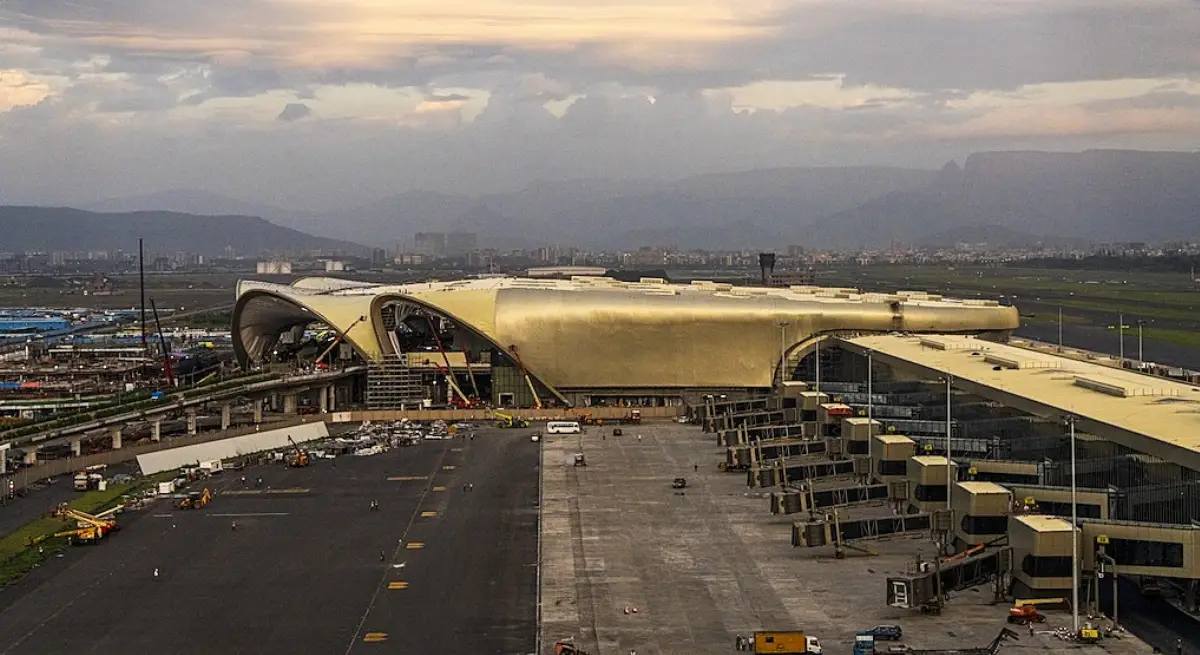
New gateway to Asia: Modi inaugurates Navi Mumbai International Airport
India unveils its second mega-hub for the financial capital, a $ 2,1 bn project in the 1^ Phase

A structure born with the ambition to handle 90 million passengers and to transform the region into the continent's principal connectivity hub
The Mumbai metropolitan region has officially inaugurated its second international airport: the "DB Patil" Navi Mumbai International Airport (NMIA). The ceremony, held yesterday afternoon on Wednesday, 8 October 2025, was presided over by Indian Prime Minister Narendra Modi, who described the project as a cornerstone for the vision of an "evolved India" and for the future of air transport on the subcontinent.
The airport, built with a structure inspired by the shape of the lotus flower, is the country's largest greenfield project (constructed on a completely new site). Developed over an area of 1,160 hectares through a public–private partnership between the Adani Group and the State agency Cidco of Maharashtra, the total cost of the first phase reached 196.5 billion rupees (equivalent to about 2.1 billion dollars).
During the ceremony, the prime minister emphasized that the new infrastructure is not only intended to relieve congestion at Mumbai's current airport, but is designed to strengthen India's global position. "Mumbai is the financial capital and one of the most vibrant cities of our country. This new airport will play a key role in transforming the region into one of the most important connectivity hubs in all of Asia", said Modi, adding that Nmia will become "a catalyst for economic growth".
The airport has been conceived to operate as a dual complementary system to the existing facility, guaranteeing Mumbai the status of a world-class "multi-airport city".
- Capacity and structure: Phase 1 is designed to initially handle 20 million passengers per year. At full capacity, with the construction of four terminals and two parallel runways, the airport will handle up to 90 million passengers and 3.25 million tonnes of cargo per year, a figure that places it in direct competition with international hubs like Incheon and Heathrow.
- Logistics and trade: particular attention has been given to the cargo sector, with seven stands for transport aircraft and 49 truck bays. Modi highlighted how the infrastructure will connect local farmers to the "supermarkets of Europe and the Middle East", lowering export costs for small and medium enterprises and stimulating investment.
NMIA also sets new sustainability standards in Indian aviation. The facility includes a solar power plant, infrastructure for Sustainable Aviation Fuel (SAF) and a fleet of electric buses for internal transit. It will also be the first airport in the country to offer a connection via water taxi, improving multimodal connectivity that also includes integration with the new metro line and the Mumbai Trans Harbour Link highway. The airport is operated by Adani Airport Holdings, which aims to make it a fully digital hub and a model of environmentally conscious and technologically advanced development.
AVIONEWS - World Aeronautical Press Agency